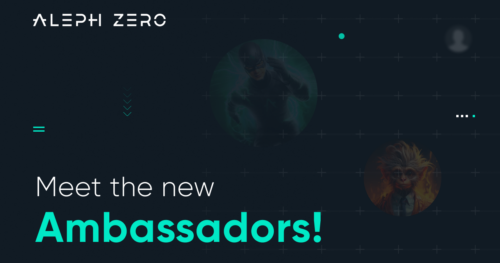Staking Is Live on the Aleph Zero Testnet
Mar 18, 2022

As we introduce staking on the Aleph Zero testnet, it’s imperative we go over the concepts of validators, nominators, staking rewards—and more.
Before we dive into the details, let’s focus on the most important takeaways. The Aleph Zero’s staking is now working on the testnet with the TZERO coins—the testnet version of the native AZERO. This doesn’t mean that you can stake your AZERO just yet. The objective of launching staking on the testnet is to bulletproof it within the next several weeks before it’s launched on the mainnet.
To stake your AZERO in a responsible fashion, you will need to understand several concepts—namely what it means to be a validator, what’s the role of nominators, how the staking rewards are distributed, what does slashing mean, and what role inflation plays in the Aleph Zero network.
Staking being live on the testnet is a part of a major testnet update that has been implemented today.
Go ahead and deep-dive into all those terms below.
Aleph Zero Validators
To become a validator on the Aleph Zero network, prospective validators will need to stake a minimum of 25,000 AZERO and meet the hardware requirements. However, these conditions may be subject to change; these will be infrequent and communicated in advance. Our goal is to decentralize this process as soon as possible and allow the community to decide on the necessary minimal stake. Please treat the above as the initial starting suggestion.

We must clarify two critical aspects regarding the validator’s role on the Aleph Zero blockchain. Firstly, all validators will accrue rewards proportionally to their uptime. Secondly, not all of them will produce and validate blocks simultaneously. That’s where the concept of the hot-seat rotating committee comes into play.
The committees will be constructed from a group of selected validators. As the Aleph Zero blockchain grows, so will the number of validators, eventually reaching the initial target of 100 committee members. Given enough time, this number may grow further as new optimizations and improvements take hold. After the conclusion of each epoch, a new randomly chosen committee will be drawn from the pool of validators and periodically rotated.
Aleph Zero Nominators
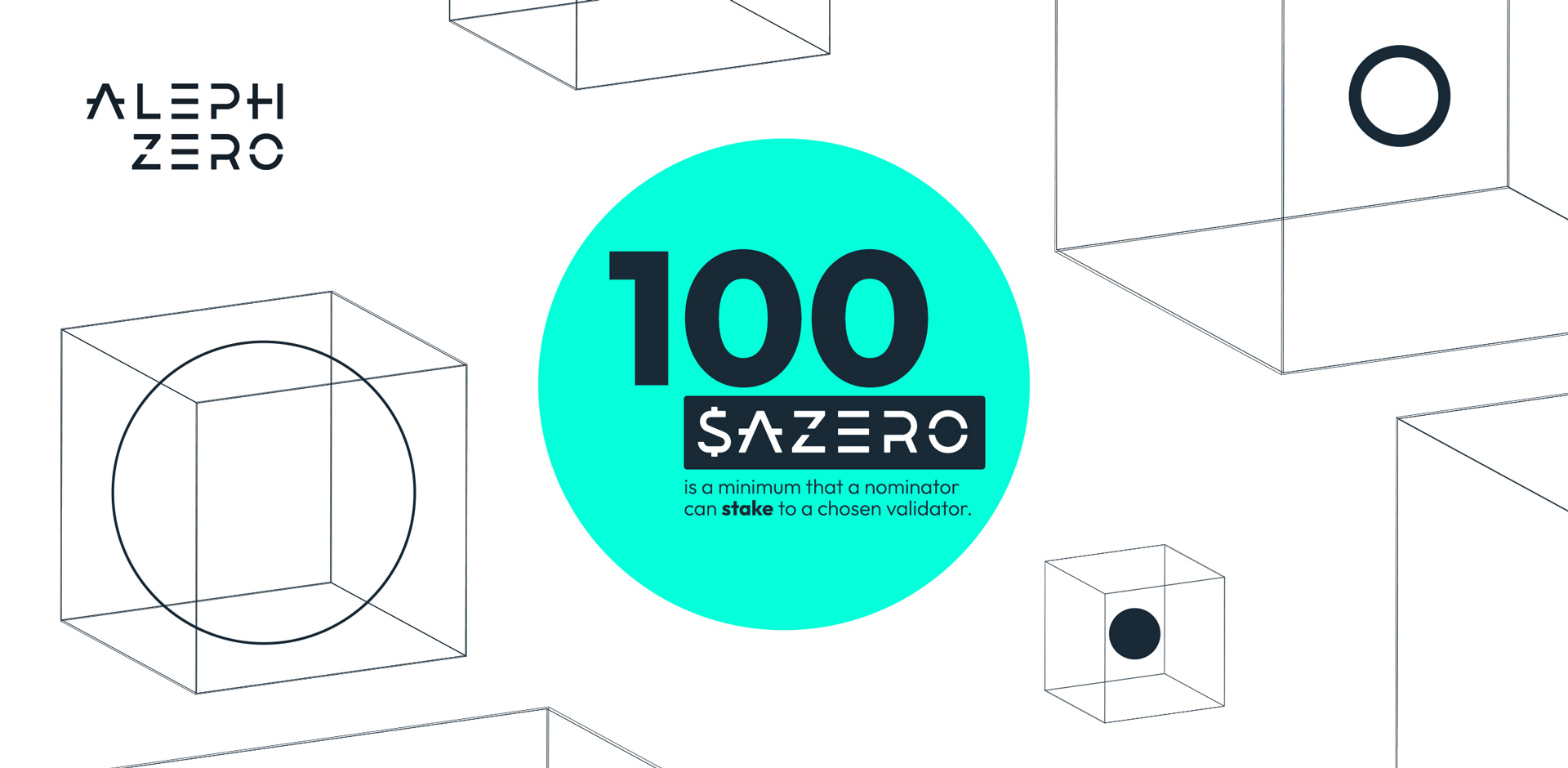
The second crucial role in the Aleph Zero network is that of the nominator. Their job is to vouch for validators by delegating their stake to them. The delegated coins will count into the total sum of coins that contribute to the validators validating power. Each nomination will incur multiple on-chain actions. Due to this fact, there will also be a need for a minimal amount the nominator must stake. Currently, we are pegging this number at 100 AZERO, and similarly, as in the case of the validator’s minimal stake, it may be subject to change. As with all major decisions, we will seek the community’s input and expedite the development of tooling necessary to properly decentralize Aleph Zero over time.
If a validator behaves maliciously, funds delegated to that validator will be subject to slashing conditions to the same extent as the validator’s funds. A validator can define an arbitrary commission to split the rewards with the nominators.
Aleph Zero Staking Rewards
Whenever a validator or nominator wishes to retrieve their stake, the coins will progress into an unbonding state. They will not be able to use their tokens for an additional 14 days. During this period, both parties will not accrue any further rewards.
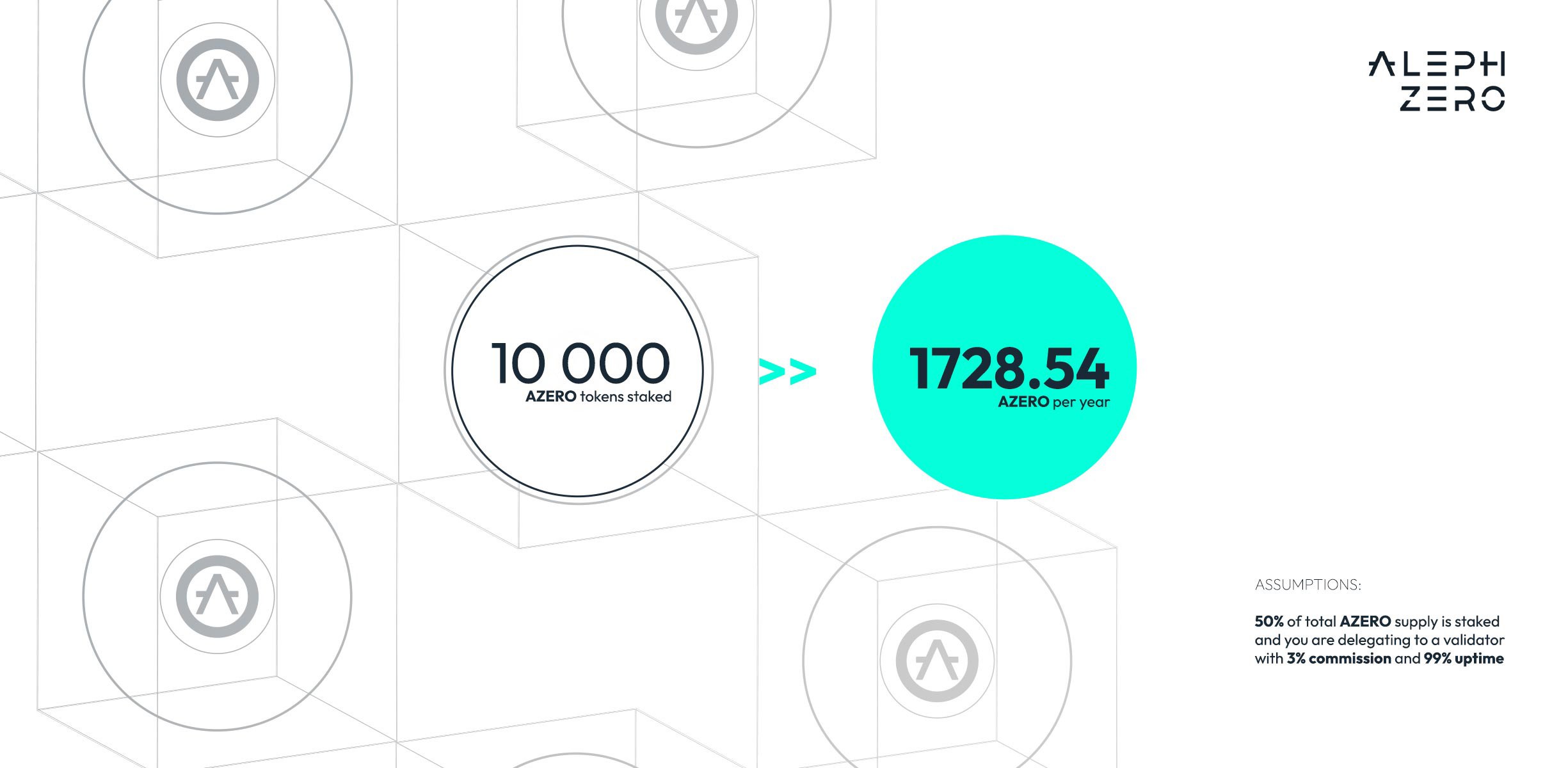
In total, AZERO will be distributed among validators and nominators each year. Out of this quota, each validator will get a reward proportional to their stake increased by the commission it takes from their nominators’ stake. Similarly, nominators get rewards proportional to their stake decreased by the validator’s commission.
Accessing Staking on Aleph Zero Testnet
You might be inclined to test-drive Aleph Zero staking and play around with the interface on the testnet. Feel free to do so! To start, you will need to follow several steps.
- Launch the testnet
Proceed to test.azero.dev in order to open the testnet explorer.
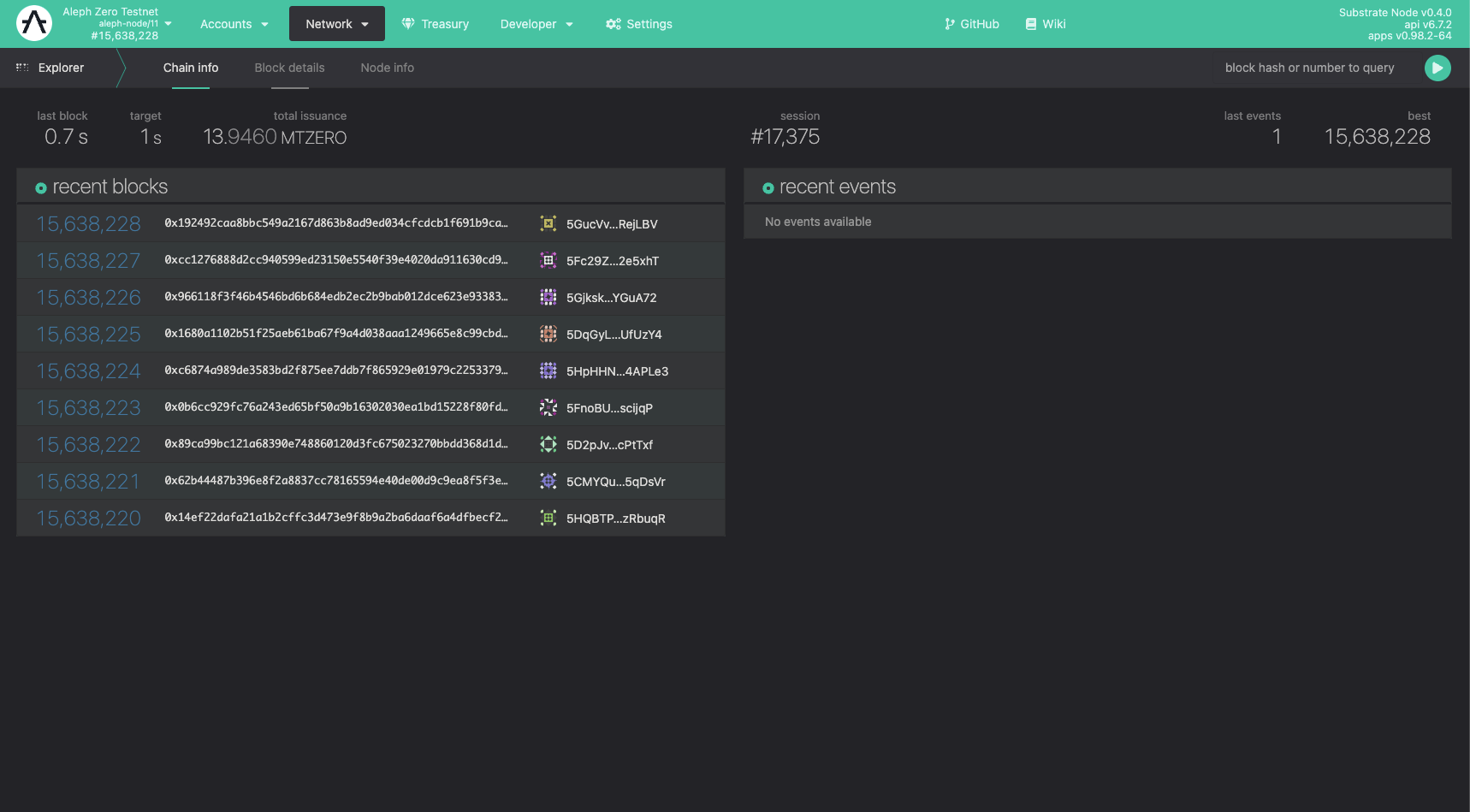
- Proceed to Network and choose Staking
Hover over Network in order to proceed to the Staking tab.
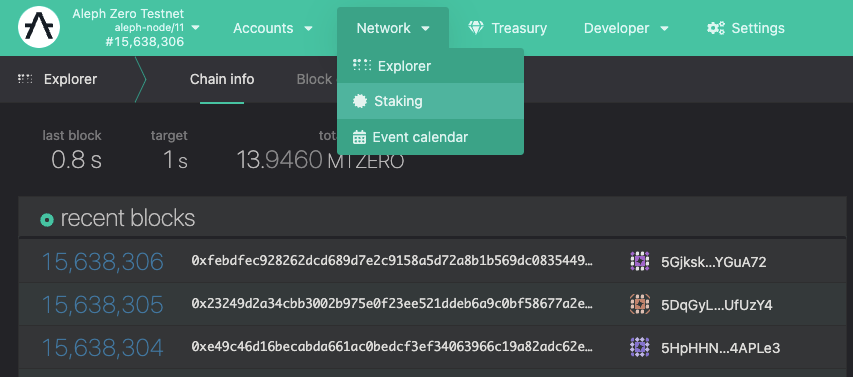
- Testnet staking view is launched!

At the moment, you will see our testnet view of the staking feature. As you can see, you can browse several nodes using a customized version of the polkadot.js interface Aleph Zero has been using for a while now. While we are working on an entirely new wallet interface, it will take a while before it will become available to the public. The interface you see here will be the same one that will be launched when this particular testnet update is pushed to the mainnet.
Final Notes
This is just the first step in Aleph Zero’s staking voyage and we will be sure to inform you about the latest updates and changes being made as we tweak the system. Most importantly though, introducing staking is the next development in surrendering more and more control to our community. We’re working on making the network truly yours and we are looking forward to the results of this experiment. More news will be upcoming about this development, so remember to keep a watchful eye on our channels!

